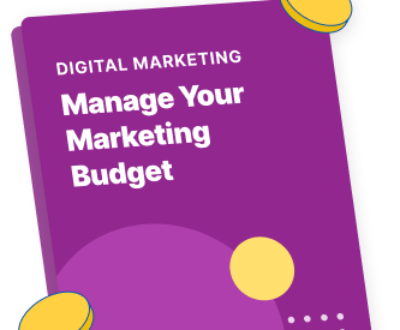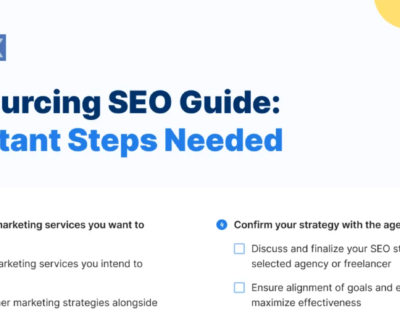What Is In-App Marketing? A Beginner’s Guide
- September 22, 2024
- Blog
So, you’ve created your first app — or maybe you’re planning on creating one. Either way, you’re here because you want to ensure your app stays hot in this increasingly competitive market.
Customer retention is crucial to staying competitive in the mobile app sector. While strategies like email marketing campaigns may be successful in attracting prospective users, in-app marketing targets your customers directly and when they’re most likely to engage with you.
Ready to learn more about in-app marketing strategies? Dive into these topics:
What is in-app marketing?
In-app marketing, or mobile app marketing, refers to any advertising or promotional campaigns you display while people actively use your app. Software as a service (SaaS) companies and product marketers use in-app marketing for a variety of reasons, like:
- Retaining users on the brink of downgrading
- Upselling users on free trials or freemium software plans to new products or upgrades
- Collecting user feedback
- Helping people use the app
- And more!
Types of in-app marketing
In-app marketing messages can appear in several different ways:
- In-app notifications: In-app notifications appear while someone is using the app and are only visible while the app is open. This in-app marketing strategy is great for educating users about different app features and offering reminders.
- Tooltips: Tooltips are notifications that appear alongside different buttons or tools and are designed to help people learn how to use different features within your app.
- Walkthroughs: Walkthroughs are a string of tooltips that follow each other as users complete different tasks. Walkthroughs are especially useful when teaching users how to use your app or navigate new tools.
- Modals: These full-screen notifications require users to perform a specific task or action to dismiss the ad or move forward in the app. For some, modals can be annoying, but when used correctly, they can offer a better user experience (UX).
- Micro-surveys: In-app surveys can be used in several different ways. Some apps use surveys simply for customer feedback, but others use them to better understand why people use the app so they can create a more personalized experience.
- Checklists: In-app checklists encourage users to complete a set list of tasks within the app to move them through the customer journey and lead them to the activation stage, like completing a profile or connecting social media accounts.
Why is an in-app marketing strategy important?
By leveraging real time and user behavior data, mobile app marketing helps you deliver relevant, hyper-personalized app marketing messages to your customers at precise points in the customer lifecycle.
Specifically, in-app marketing offers benefits like:
- Improved UX: You can use mobile app marketing to walk new users through your app and demonstrate its value and capabilities. This provides a quick and easy onboarding experience while also establishing a knowledge base for users.
- Customer feedback collection: In-app messaging allows you to collect user feedback directly related to your app’s UX, and quickly implement new changes that improve the overall experience for users.
- Personalized messaging: With customer feedback and behavioral data, you can deliver hyper-targeted messages to users to create a personalized app experience that’s unique to each user and inspires increased engagement.
- Better customer retention: Improved UX, the notion that feedback is being heard and implemented, and a personalized app experience all further your chances of attracting and retaining users. People want to use an app that feels made for them, and with mobile app marketing, that’s possible.
How to do in-app marketing
Follow these steps on how to set up an in-app marketing strategy:
- Outline your in-app marketing goals
- Choose your tools
- Test and refine your strategy
1. Outline your in-app marketing goals
Developing a successful in-app marketing strategy starts with outlining your campaign’s goals. What do you hope to achieve? Mobile app marketing strategies all have their own unique benefits — checklists help increase user engagement, tooltips improve UX, surveys help you collect feedback, and so on.
When planning your in-app marketing strategy, identify what you want your campaign to accomplish and choose strategies that will help you reach those goals. This will help you keep your campaign focused and avoid investing in strategies that don’t generate a positive return on investment (ROI).
2. Choose your tools
Running a mobile app marketing campaign can feel overwhelming, but with the right tools, you can streamline processes and make campaign maintenance easier.
Mobile app marketing tools like analytics platforms and data aggregation tools built specifically for apps can help you collect and analyze user behavior data and interpret results. Plus, you can invest in tools to help you design modals, pop-up notifications, and more.
Explore the Top In-App Marketing Tools!
3. Test and refine your strategy
As you run your campaign, you should regularly evaluate its effectiveness by analyzing key performance indicators (KPIs) and user behavior data. Identify what messaging and notifications generate positive campaign results, and adjust your campaign as needed.
You can also run A/B tests to try out different versions of notifications and understand what messaging users respond best to. When choosing in-app marketing tools, keep an eye out for ones with mobile A/B testing capabilities.
Top mobile app marketing tools
Ready to take your mobile app marketing strategy to the next level? Check out these in-app marketing tools that can help you manage your campaign, analyze data, and more:
| BEST FOR | KEY FEATURES | COST | |
| Mixpanel | Analytics reporting, campaign management | Multi-touch attribution, campaign reporting, account-level behavioral analytics, data management | Free plan, or starting at $28/mo |
| Firebase by Google | A/B testing, app monetization | Backend building tools, API resources, app hosting, automated app testing, monetization tools | See pricing |
| Canva | Notification design | Branded templates, AI tools, asset management, workflows, team collaboration | Free plan, or starting at $10/mo per person |
| Segment | Data management, audience segmentation | Customer data management, audience segmentation, customer acquisition | Free plan, or starting at $128/mo |
| Branch.io | Mobile app attribution, deep linking | Mobile ad and web linking, ad attribution, data exports, audience creation | See pricing |
| Sensor Tower (formerly data.ai) | Analytics reporting, mobile performance monitoring | Mobile Performance Score (MPS), AI-driven analytics, market research, acquisition funnels | Request a demo to explore pricing details |
In-app marketing examples
We’ve talked a lot about how to create a mobile app marketing strategy, but now let’s take a look at some in-app marketing examples from some companies that are doing it right:
Duolingo — Onboarding & upgrades
Duolingo makes learning a new language fun. Not to mention, it makes new user onboarding simple! From the get-go, Duolingo ensures you’re starting your language-learning journey at the right pace. Users specify how familiar they are with their chosen language, and Duolingo builds a curriculum around it.
Along with onboarding, Duolingo offers plenty of learning tools and games within the app that are available through subscription upgrades. These give users the chance to enhance their learning experiences and take their language skills to the next level.
Spotify — Personalized suggestions
Spotify features an expansive music library, so it can feel overwhelming for users trying to find something new to listen to. Thankfully, Spotify has a solution for that — personalized playlists, radio, and artist suggestions.
Spotify analyzes your listening history and user behavior to identify similar artists, albums, audiobooks, and podcasts you might like. This way, instead of getting bored listening to the same old thing, users can continue exploring Spotify’s offerings well after downloading the app.
Canva — Micro-surveys
Along with being a handy in-app marketing tool, Canva is a great example of how to use micro-surveys to better tailor app experiences to individual users. Upon signing up for Canva, whether it’s their free or paid plan, users are asked to specify why they’re using Canva. Depending on why you’re using it (marketing, business, personal, or educational purposes, etc.), Canva will suggest design templates and designs best suited for your needs.
In-app marketing best practices
Before we go, check out some important tips and best practices to remember when launching your own in-app marketing campaign.
- Understand why people use your app
- Tie a specific action to each notification
- Listen to your users
Understand why people use your app
When it comes to mobile app marketing, ensuring your notifications and pop-ups are relevant to your users is crucial to your campaign’s success. Knowing why people use your app and pinpointing unique selling propositions (USPs) will help you keep your campaign focused and avoid diluting your notifications until they become irrelevant.
Tie a specific action to each notification
When determining in-app promotion and notification frequency, you have to find that sweet spot. Too few notifications, and you risk creating apathetic users. Too many, and you can disrupt their app usage and risk chasing them away.
Avoid these scenarios by tying specific actions to each message you launch. Every notification users see should add value to their experience, whether it introduces them to a feature, informs them of relevant software updates, or walks them through an onboarding process.
Listen to your users
People want to use an app that feels made for them, and the best way to do that is to listen to your users and make sure they know you’re open to feedback.
Create a line of communication with your audience where they can submit feedback and access resources for troubleshooting. Doing so shows users that you’re open to making improvements that improve their experience. Plus, it improves your chances of retaining customers and encouraging better user engagement.
Ready to create and market your app? We’ve got you covered
Whether you’ve already created an app or you’re just getting started, the team at WebFX understands the work that goes into it all. We offer custom app development services so you can offer unique mobile experiences to your audience. With our mobile app experts by your side to guide you through the development and marketing processes, you can spend more time growing your business and less time worrying about the details — we’ll handle it!
Explore our custom iPhone app development services, or give us a call at 888-601-5359 to speak with one of our specialists to learn more about working with WebFX to start creating an in-app marketing strategy!
About us and this blog
We are a digital marketing company with a focus on helping our customers achieve great results across several key areas.
Request a free quote
We offer professional SEO services that help websites increase their organic search score drastically in order to compete for the highest rankings even when it comes to highly competitive keywords.






